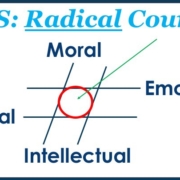What Golf’s Masters Tournament Tells Leaders About Hiring
You’ve told me that attracting and retaining talent is at the top of your concerns. The economy is in full employment, and people are less willing to job-hop, so gaining new talent is challenging.
Widening the applicant pool by reducing your standards is tempting, but what invariably happens is that you get more wrong-fit employees, which creates friction and leads to more turnover. The U.S. Army relearns this lesson every generation.
You should do the opposite and strengthen them. The Masters shows why.
I confess that I’m not a golfer or fan of the sport. I calculate the value of a golf game in strokes per dollar (I get a great ROI) and believe in testing myself in the most challenging situations. My balls invariably end up in the rough, the sand, the ditch, the lake, and behind the largest trees. Watching the sport on TV is like watching paint dry.
Golf has strict rules, which the Masters in Augusta, Georgia, takes to new heights. You cannot bring your mobile phone or a camera onto the course. You can bring a chair to reserve your spot and not remove another person’s chair. Those chairs cannot have arms or be large folding chairs.
There is no running, no jeans, and no attire with logos. You must consume alcohol in designated areas, but you can puff on a cigar anywhere.
These types of rules are standards: something that anyone can live up to.
Arbitrary rules that deny membership based on race, sex, gender, etc., by contrast, are discriminatory. The Augusta National Golf Club has removed its discriminatory policies, allowing people of all races in 1990 and accepting women in 2012.
30,000 to 40,000 people attend the Masters tournament daily. Their standards attract and retain people willing to buy into them and repel people who won’t.
People like working and playing with people who share the same standards, so if you want to attract and retain your best-fit talent you should strengthen rather than relax your standards.
Here are three action steps you can take:
1. State your standards using the X so that Y formula. X is the standard. “So that” is a prompt to ensure you cover Y: the result or outcome you intend by doing X. For the Masters the Y is “maintaining decorum.”
2. Use the pressure gauge to make them more explicit. This tool helps you define what is acceptable and what behaviors are out of bounds. Co-create them with your employees to gain greater buy-in.
3. Provide employee examples of the standards in action. Real-life examples help people see themselves in the story and clarify your company’s expectations.
Straightforward, sensible standards that obviously benefit your company’s common good attract and retain the best-fit people.
Standards are vital to your company’s common good, which is at the heart of my trademarked program, Building an Inspiring Culture®. You can review the contents here.
CEOs use this program to get their key leaders on the same page. In the live-led version, I coach and facilitate your team so that you get results faster. Email me to discuss what a live-led version would look like for your company.










